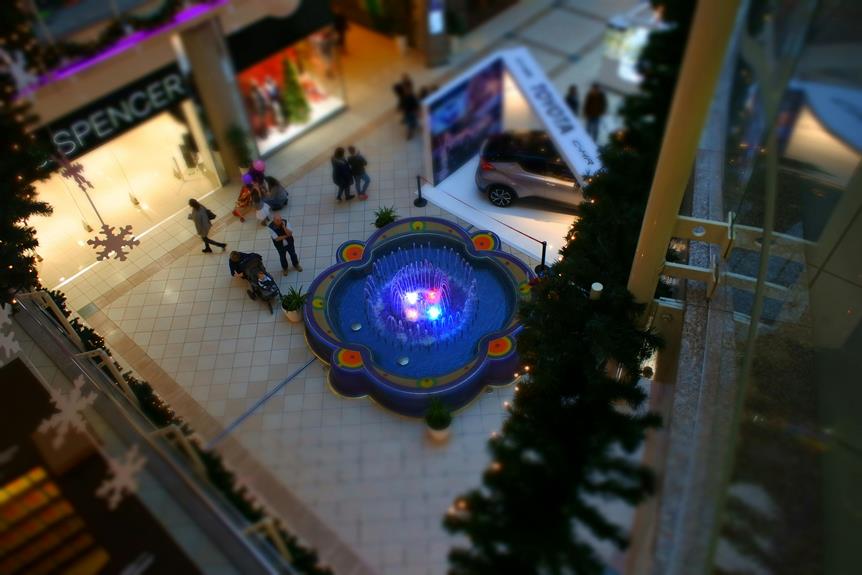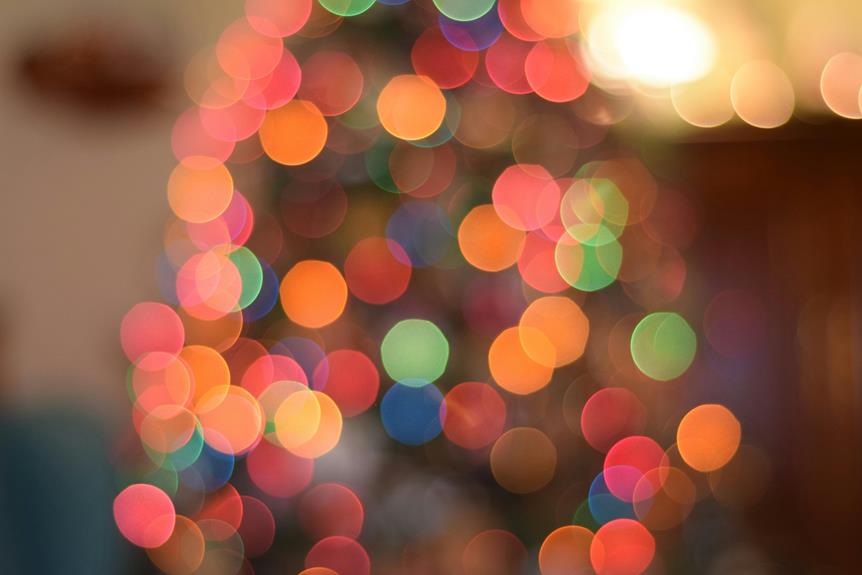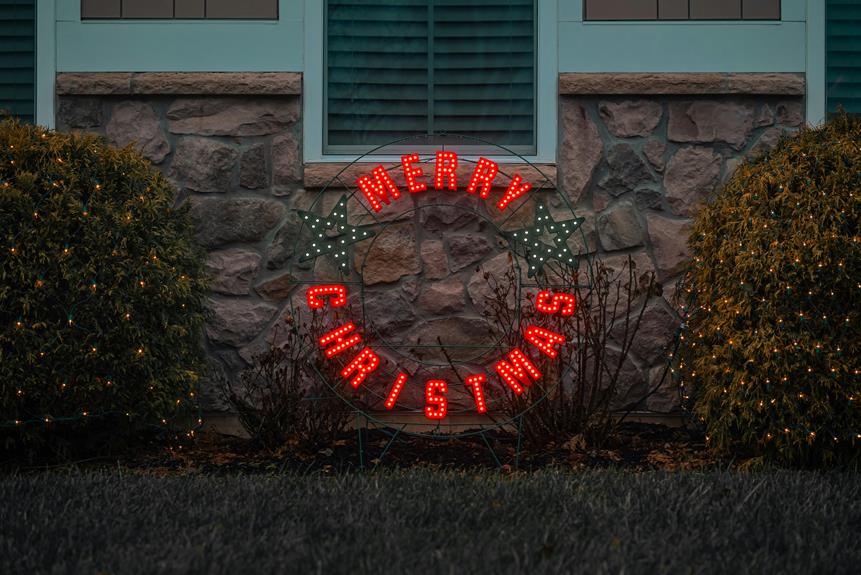To plan the perfect outdoor Christmas light display, start by evaluating your outdoor space, identifying areas for lighting, and taking note of power outlets and hazards. Choose a theme or color scheme that suits your style, then select the right lighting types, considering Lumen Output and voltage requirements. Plan your lighting design, using software to visualize and balance your lights. Prepare your outdoor infrastructure by checking electrical outlets and wiring, and schedule installation and testing. With a solid plan in place, you're ready to bring your winter wonderland to life – and there's still so much more to explore to make it truly unforgettable.
Key Takeaways
- Identify potential areas for lighting, including rooflines, trees, and bushes, and measure outdoor space to determine the number of lights needed.
- Choose a theme or color scheme, such as Winter Wonderland or Coastal Vibes, to guide lighting and decoration decisions.
- Select lighting types, considering factors like Lumen Output, voltage requirements, and special effects, to create a visually appealing display.
- Plan the lighting design using software or sketching to balance lights, create focal points, and ensure a consistent look from all angles.
- Prepare outdoor infrastructure by inspecting electrical outlets, wiring, and extension cords to ensure they can handle the increased power load.
Assess Your Outdoor Space
As you begin planning your outdoor Christmas light display, take a walk around your property to assess its layout, identifying potential areas for lighting, such as rooflines, trees, and bushes. This walk-through will help you visualize where you can hang lights and what yard obstacles you'll need to work around.
Take note of any power outlets, water features, or other hazards that could impact your lighting design.
Measure your outdoor space to determine how many lights you'll need. Calculate the linear footage of your rooflines, the circumference of your trees, and the area of your bushes.
Don't forget to measure any stairs, railings, or other features you want to highlight. Make a list of these space measurements to reference later.
Identify any yard obstacles that could hinder your lighting installation, such as low-hanging branches, steep slopes, or fragile plants.
Consider how you'll navigate these challenges and whether you'll need specialized equipment or additional help.
Choose a Theme or Color Scheme
Your outdoor Christmas light display's overall aesthetic and cohesiveness hinge on a well-defined theme or color scheme, which sets the tone for the entire project. This will help you create a cohesive look and guarantee that all your decorations work together harmoniously. When choosing a theme or color scheme, consider your personal style, the architecture of your home, and the surrounding environment.
Winter Wonderland: icy blues and whites, frosted glass, and snowflake decorations
Coastal Vibes: calming blues and whites, seashells, and driftwood accents
Traditional Holiday: classic red and green, gold and silver accents, and festive patterns
Monochromatic: a single bold color, like red or blue, used in varying shades and textures
Whimsical Woodland: earthy tones, forest-inspired decorations, and twinkling string lights
Select the Right Lighting Types
You'll need a mix of lighting types to create visual interest and achieve your desired theme or color scheme.
Don't settle for just one type – combining different lights will add depth and visual appeal to your display.
Consider the purpose of each light: net lights for bushes, icicle lights for eaves, and string lights for wrapping around railings or trees.
When selecting lights, think about the Lumen Output, which measures brightness.
If you're lighting a large area, you'll need lights with a higher Lumen Output.
For smaller areas, lower-output lights will suffice.
Also, be mindful of Voltage Requirements, ensuring that your lights are compatible with your outdoor power sources.
LED lights, for instance, typically require less voltage than incandescent lights.
Don't forget about special effects lights, like twinkling or color-changing lights, to add an extra wow factor.
Finally, consider the durability and weather resistance of your lights, as they'll be exposed to the elements.
Plan Your Lighting Design
With your lighting types selected, now it's time to visualize how they'll come together to create a cohesive and enchanting outdoor Christmas light display.
To do this, you'll need to plan your lighting design. This is where you'll decide how to balance your lights, create focal points, and guide the viewer's eye through your display.
You can use lighting software to help you plan and visualize your design. This will allow you to see how your lights will look before you start hanging them.
When planning your design, keep the following principles in mind:
- Symmetry and balance: Make sure your display is visually appealing from all angles.
- Focal points: Create areas of interest to draw the viewer's eye.
- Unity and cohesion: Use a consistent color scheme and lighting style to tie everything together.
- Contrast and variety: Mix different lighting types and levels to add depth and interest.
- Theme and story: Create a narrative or theme to make your display more engaging.
Prepare Your Outdoor Infrastructure
Check your outdoor electrical outlets and wiring to verify they can handle the increased power load from your holiday lights.
You don't want your lights to overload your system and cause a blackout or, worse, an electrical fire.
Make sure your outdoor outlets are weatherproof and can withstand the elements.
You can also think about installing outlets with built-in surge protection to safeguard your lights and other outdoor decorations from power surges.
Next, inspect your outdoor wiring to confirm it's in good condition and can handle the added load.
Look for any signs of wear, fraying, or damage, and replace any damaged sections.
You may also want to ponder using heavy-duty outdoor extension cords rated for outdoor use to connect your lights.
Schedule Installation and Testing
Timing is everything when it comes to installing and testing your outdoor Christmas light display. You'll want to plan ahead to guarantee everything is up and running smoothly before the holiday season kicks into high gear.
To avoid last-minute stress, create a lighting timeline that outlines when and how you'll install your lights.
Consider the following:
- Set a specific installation date and stick to it
- Allow a few extra days for unexpected delays or weather setbacks
- Schedule a test run to verify all lights are working properly
- Make any necessary adjustments before the big reveal
- Have a Weather Backup plan in place in case of bad weather on installation day
Frequently Asked Questions
Can I Use Last Year's Lights or Do I Need New Ones?
You're wondering if last year's lights will cut it this season. Before deciding, inspect your lights for damage, corrosion, or worn-out bulbs. Proper light maintenance, like storing them correctly, can extend their lifespan, but it's time to invest in new ones if you notice significant wear.
How Do I Prevent Lights From Getting Tangled During Storage?
When storing lights, you'll want to prevent tangles by using Light Winders or wrapping them around cardboard reels. Then, place them in labeled Storage Bins to keep them organized and protected from damage.
Are LED Lights Really More Energy Efficient Than Incandescent?
As you unwrap the twinkling lights, symbolizing joy and warmth, you wonder: are LED lights truly more energy efficient than incandescent? Yes, they are! With a higher color temperature and significant energy savings, LEDs shine brighter while saving you money.
Can I Hang Lights on My Roof Without Damaging It?
You're wondering if you can hang lights on your roof without damaging it. First, consider your roof type – asphalt, metal, or clay tiles – and check if you have gutter guards, as these can affect installation and weight distribution.
How Long Should I Leave My Outdoor Lights up After Christmas?
As the festive fog lifts, you're left wondering when to take down the twinkling lights that transformed your home into a Winter Wonderland. Beat the Post Holiday Blues by leaving them up until mid-January, then gently dismantle and store them for next year's magic.
Conclusion
Research shows that 65% of Americans believe outdoor decorations are an essential part of the holiday experience.
By following these steps, you've not only created a dazzling display but also contributed to the festive atmosphere of your neighborhood.
Now, sit back, plug in, and enjoy the magic you've created!


